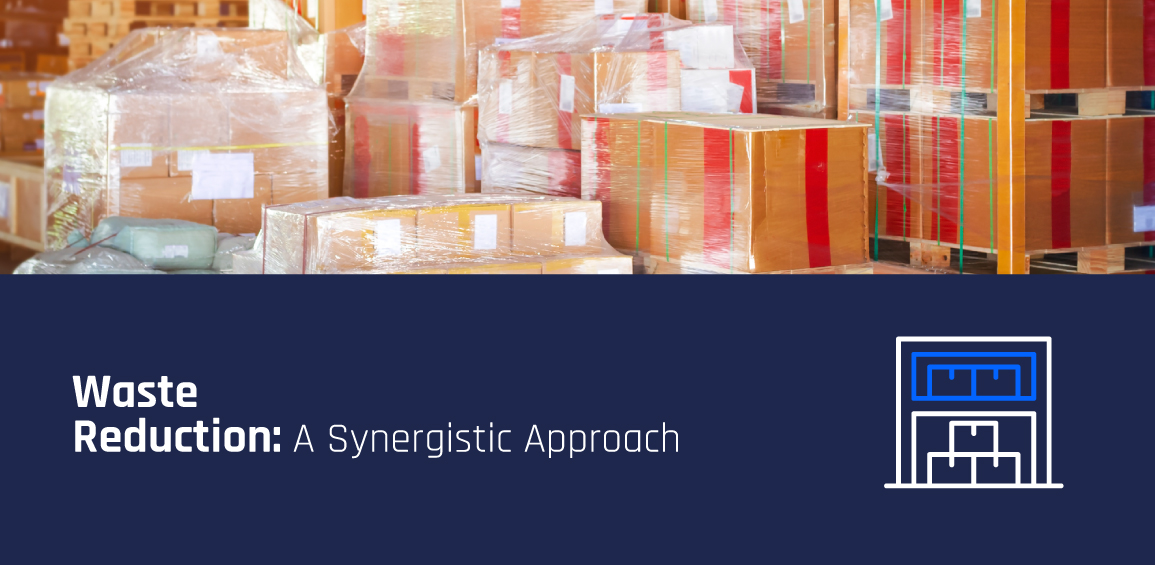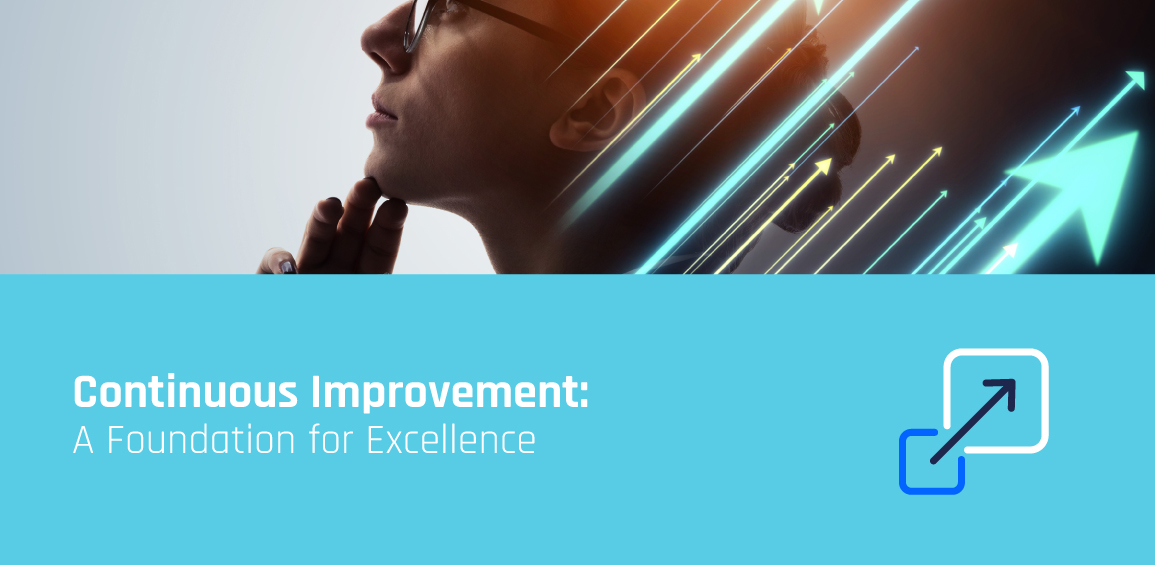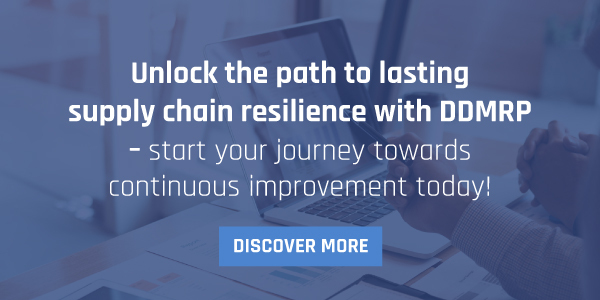
The Impact of Lead Time Variability on Supply Chain Performance: A DDMRP Perspective
February 16, 2024
The Agile Advantage: How DDMRP Transforms Supply Chains for Competitive Edge
March 18, 2024In today’s dynamic business landscape, effective lead time management is crucial for staying competitive and meeting customer demands. Organisations across industries are constantly seeking methodologies to optimise their supply chain processes, reduce lead times, and enhance overall efficiency. Two prominent methodologies that have gained significant traction in recent years are Demand Driven Material Requirements Planning (DDMRP) and Lean principles. While DDMRP focuses on managing variability and improving flow, Lean principles emphasise waste reduction and continuous improvement. In this article, we’ll delve into the synergies between DDMRP and Lean principles and explore how organisations can strategically integrate these approaches to achieve optimal lead time management.
Understanding DDMRP and Lean Principles
DDMRP: Managing Variability and Enhancing Flow
Demand Driven Material Requirements Planning (DDMRP) stands as a beacon of innovation in the realm of supply chain management. Unlike its predecessors, which relied heavily on static forecasts and rigid lead times, DDMRP operates dynamically, synchronising supply chain activities with actual demand variability. This adaptability is crucial in today’s volatile market landscapes, where consumer preferences can shift rapidly, leaving traditional supply chain approaches struggling to keep pace.
One of the key features of DDMRP is its ability to dynamically adjust inventory levels based on real-time demand signals. By decoupling material requirements planning from the master production schedule, DDMRP provides organisations with the flexibility to buffer against demand fluctuations without compromising on flow efficiency. This decoupling not only reduces the impact of demand variability on lead times but also enhances overall responsiveness, allowing organisations to better meet customer demands in a timely manner.
Lean Principles: Waste Reduction and Continuous Improvement
Complementing the principles of DDMRP are the foundational pillars of Lean methodology, which focus on waste reduction and continuous improvement. Derived from the renowned Toyota Production System, Lean principles provide a comprehensive framework for optimising processes, eliminating inefficiencies, and driving sustainable improvements in efficiency and quality.
At the heart of Lean philosophy lies the relentless pursuit of waste reduction. Whether it be overproduction, defects, waiting times, unnecessary transportation, or underutilised talent, Lean principles aim to identify and eliminate all forms of waste that impede flow and detract from value creation. By streamlining operations and minimising waste, organisations can achieve shorter lead times, lower costs, and higher quality, ultimately enhancing their competitiveness in the marketplace.
Moreover, Lean principles emphasise the importance of continuous improvement as a fundamental aspect of organisational culture. By empowering employees to identify and solve problems at all levels of the organisation, Lean fosters a culture of innovation and excellence, where incremental improvements are celebrated and pursued relentlessly. This commitment to continuous improvement ensures that organisations remain agile and adaptable in the face of evolving market dynamics, driving sustained growth and profitability over the long term.
Synergies Between DDMRP and Lean Principles
Flow Optimization: A Core Objective
Optimising flow within the supply chain is essential for enhancing efficiency, reducing lead times, and meeting customer demands promptly. Both Demand Driven Material Requirements Planning (DDMRP) and Lean principles prioritise flow optimization as a core objective, recognizing its significance in achieving operational excellence.
DDMRP stands out for its dynamic approach to inventory management, which directly contributes to flow optimization. By adjusting inventory buffers in real-time based on actual demand variability, DDMRP ensures that materials are available precisely when needed, mitigating the risk of stockouts while avoiding excessive buffering. This dynamic adjustment not only optimises flow but also enhances responsiveness, enabling organisations to align their inventory levels more closely with customer demand patterns.
In parallel, Lean principles offer a complementary approach to flow optimization by focusing on identifying and eliminating bottlenecks, reducing cycle times, and streamlining processes throughout the supply chain. By removing obstacles and inefficiencies that impede the smooth flow of materials and information, Lean principles help enhance overall flow efficiency, enabling organisations to deliver products and services more swiftly and cost-effectively.
The integration of DDMRP with Lean principles offers a holistic approach to flow optimization, leveraging the strengths of both methodologies. By combining DDMRP’s dynamic inventory management with Lean’s focus on process efficiency, organisations can achieve a balanced approach that minimises excess inventory while simultaneously reducing lead times. This synergy allows organisations to optimise flow without sacrificing responsiveness or incurring unnecessary costs, thereby enhancing their competitiveness in the market.
Furthermore, integrating DDMRP with Lean principles enables organisations to address flow optimization from multiple angles, considering both the demand side and the supply side of the equation. By synchronising inventory management with process improvement initiatives, organisations can achieve greater alignment between supply and demand, resulting in smoother flow throughout the entire supply chain network.

Waste Reduction: A Synergistic Approach
In the pursuit of operational excellence, waste reduction stands as a critical objective for organisations seeking to optimise their supply chain performance. Both Demand Driven Material Requirements Planning (DDMRP) and Lean principles recognize the importance of waste reduction and offer complementary approaches to address this challenge.
DDMRP, while primarily focused on managing variability and improving flow, plays a significant role in identifying and reducing inventory-related waste. By dynamically adjusting inventory buffers based on actual demand signals, DDMRP helps minimise excess inventory, obsolete stock, and associated carrying costs. This proactive approach to inventory management not only ensures that materials are available when needed but also prevents the accumulation of unnecessary inventory, thereby reducing waste throughout the supply chain.
On the other hand, Lean principles provide a comprehensive framework for identifying and eliminating all forms of waste across the entire supply chain. Whether it be overproduction, defects, waiting times, unnecessary transportation, or underutilised talent, Lean principles offer a systematic approach to identify and address inefficiencies that detract from value creation. By empowering employees to identify waste and implement continuous improvement initiatives, Lean principles foster a culture of waste reduction and efficiency enhancement throughout the organisation.
The integration of DDMRP with Lean principles offers a synergistic approach to waste reduction, leveraging the strengths of both methodologies. By aligning inventory management practices with Lean’s waste reduction techniques, organisations can systematically identify and address various sources of waste across the supply chain. This integrated approach enables organisations to achieve further reductions in lead times and costs while enhancing overall efficiency and competitiveness.
Furthermore, by aligning DDMRP with Lean principles, organisations can address waste reduction from multiple perspectives, considering both the demand side and the supply side of the equation. By synchronising inventory management practices with Lean’s focus on process improvement, organisations can drive waste reduction initiatives that target inefficiencies at every stage of the supply chain, from procurement to production to distribution.

Continuous Improvement: A Foundation for Excellence
Continuous improvement lies at the heart of organisational excellence, driving ongoing learning, innovation, and adaptation to enhance efficiency and effectiveness. While Lean methodology places a strong emphasis on continuous improvement, Demand Driven Material Requirements Planning (DDMRP) offers a flexible framework that complements this principle, enabling organisations to adapt and refine their operations over time.
Lean methodology, derived from the Toyota Production System, emphasises the importance of ongoing learning, experimentation, and adaptation to drive incremental gains in efficiency and effectiveness. By fostering a culture of continuous improvement, Lean encourages employees at all levels to identify inefficiencies, propose solutions, and implement changes to enhance overall performance. This relentless pursuit of improvement enables organisations to stay ahead of the competition and drive sustained growth and profitability over the long term.
While DDMRP may be less focused on continuous improvement compared to Lean, it provides a flexible framework that allows organisations to adapt to changing demand patterns and refine inventory buffers over time. By dynamically adjusting inventory levels based on actual demand signals, DDMRP enables organisations to respond quickly to shifts in customer preferences and market conditions, thereby enhancing agility and responsiveness.
Moreover, by integrating DDMRP with Lean principles, organisations can foster a culture of continuous improvement that leverages the strengths of both methodologies. By combining DDMRP’s dynamic inventory management techniques with Lean’s focus on process improvement, organisations can create a powerful framework for driving ongoing optimization and innovation throughout the supply chain.
This integration enables organisations to leverage DDMRP’s flexibility to adapt to changing demand patterns while also harnessing Lean’s systematic approach to identify and address inefficiencies. By empowering employees to actively participate in the continuous improvement process, organisations can tap into the collective knowledge and expertise of their workforce to drive meaningful change and achieve sustainable improvements in lead times and overall performance.

Strategic Integration of DDMRP and Lean Principles
Assessing Organisational Readiness
Assessing organisational readiness is a crucial first step before embarking on the integration of Demand Driven Material Requirements Planning (DDMRP) and Lean principles. This process involves a comprehensive evaluation of the organisation’s processes, systems, and culture to identify strengths, weaknesses, and areas for improvement.
Leaders must examine the existing processes within the organisation to determine their effectiveness and alignment with the principles of DDMRP and Lean. This includes assessing how materials are planned, procured, and managed throughout the supply chain, as well as identifying any inefficiencies or bottlenecks that may hinder flow optimization or waste reduction efforts.
In addition to evaluating processes, leaders should assess the organisation’s systems and technology infrastructure to determine their capability to support the integration of DDMRP and Lean principles. This includes examining the organisation’s inventory management systems, production planning tools, and data analytics capabilities to ensure they are robust and flexible enough to accommodate the requirements of both methodologies.
Furthermore, leaders must assess the organisation’s culture to determine its readiness for change and continuous improvement. This involves evaluating factors such as employee attitudes towards change, willingness to embrace new methodologies, and openness to feedback and collaboration. Leaders should also consider the organisation’s history of implementing process improvements and its track record of success in driving change initiatives.

Defining Strategic Objectives
After assessing organisational readiness, the next critical step in integrating Demand Driven Material Requirements Planning (DDMRP) and Lean principles is defining clear strategic objectives. These objectives must align with broader business goals and focus on specific outcomes related to lead time management, cost efficiency, and customer satisfaction.
Organisations should begin by identifying key areas where the integration of DDMRP and Lean principles can drive value. This may include reducing lead times, minimising inventory levels, improving product quality, or enhancing overall supply chain efficiency. By prioritising objectives that align with the organisation’s strategic priorities, leaders can ensure that the integration effort delivers tangible benefits and supports long-term business success.
Once objectives have been identified, they should be translated into measurable targets and milestones. This allows organisations to track progress, monitor performance, and evaluate the impact of the integration effort over time. Measurable targets provide a clear benchmark for success and enable organisations to assess whether they are on track to achieve their strategic objectives.
Implementing Integrated Processes
Once strategic objectives have been defined, the implementation of integrated DDMRP and Lean processes can begin. This involves redesigning supply chain workflows, reconfiguring systems, and realigning roles and responsibilities to support the new operating model.
Cross-functional collaboration is essential during the implementation process, as it ensures that all stakeholders are involved and engaged in the integration effort. This may involve working closely with teams from various departments, including procurement, production, logistics, and customer service, to ensure that processes are aligned and coordinated effectively.
Training and change management initiatives are also critical during the implementation phase to ensure smooth adoption and alignment with organisational goals. This may involve providing employees with the necessary training and support to understand and implement new processes and systems, as well as addressing any concerns or resistance to change that may arise.
By involving stakeholders at all levels and fostering a culture of collaboration and continuous improvement, organisations can successfully implement integrated DDMRP and Lean processes that drive tangible improvements in lead times, cost efficiency, and customer satisfaction.
Monitoring and Continuous Improvement
Once integrated processes are in place, organisations must establish mechanisms for monitoring performance and driving continuous improvement. This involves tracking key performance indicators (KPIs) related to lead times, inventory levels, on-time delivery, and customer satisfaction to identify areas of improvement and address emerging challenges proactively. By leveraging data analytics and feedback mechanisms, organisations can make data-driven decisions and iterate on their processes to sustain and enhance the benefits of the integration over time.
Conclusion
Strategic lead time management is essential for organisations seeking to optimise their supply chain operations and stay competitive in today’s fast-paced business environment. By integrating DDMRP with Lean principles, organisations can achieve a balance between cost-efficiency and responsiveness while reducing lead times and enhancing overall performance. Through synergies in flow optimization, waste reduction, and continuous improvement, the integration of these methodologies offers a comprehensive approach to lead time management that drives sustainable value creation and customer satisfaction. As organizations continue to evolve and adapt to changing market dynamics, the strategic integration of DDMRP and Lean principles will remain a critical enabler of success in the journey towards supply chain excellence.
Reach out for insights tailored to your supply chain goals.- Get in touch today!





